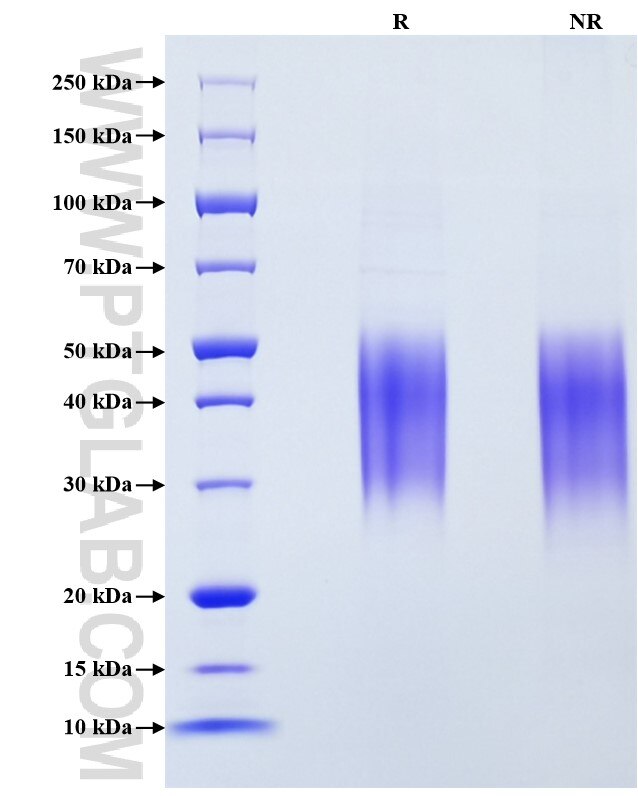Recombinant Mouse KIM-1/HAVCR1 protein (His Tag)
Species
Mouse
Purity
>90 %, SDS-PAGE
Tag
His Tag
Activity
not tested
Cat no : Eg0571
Validation Data Gallery
Product Information
| Purity | >90 %, SDS-PAGE |
| Endotoxin | <0.1 EU/μg protein, LAL method |
| Activity |
Not tested |
| Expression | HEK293-derived Mouse KIM-1 protein Tyr22-Thr212 (Accession# Q5QNS5-1) with a His tag at the C-terminus. |
| GeneID | 171283 |
| Accession | Q5QNS5-1 |
| PredictedSize | 21.8 kDa |
| SDS-PAGE | 30-50 kDa, reducing (R) conditions |
| Formulation | Lyophilized from 0.22 μm filtered solution in PBS, pH 7.4. Normally 5% trehalose and 5% mannitol are added as protectants before lyophilization. |
| Reconstitution | Briefly centrifuge the tube before opening. Reconstitute at 0.1-0.5 mg/mL in sterile water. |
| Storage Conditions |
It is recommended that the protein be aliquoted for optimal storage. Avoid repeated freeze-thaw cycles.
|
| Shipping | The product is shipped at ambient temperature. Upon receipt, store it immediately at the recommended temperature. |
Background
Kidney injury molecule 1 (KIM-1), also known as Hepatitis A virus cellular receptor 1 (HAVCR1), CD365, or T-cell immunoglobulin and mucin domain 1 (TIM-1), is a class I integral membrane glycoprotein, with an ectodomain containing Ig-like domain and a mucin domain. KIM-1 acts as a membrane receptor for hepatitis A virus (HAV). KIM-1 provides a costimulatory signal for T cell activation and inhibits the development of peripheral tolerance. KIM-1 may be involved in the regulation of asthma and allergic diseases. It has been reported that KIM-1 is shed into urine after acute kidney damage and is a marker of renal tubular injury.
References:
1. G Kaplan, et al. (1996) EMBO J. 15(16):4282-96. 2. D Feigelstock, et al. (1998) J Virol. 72(8):6621-8. 3. Jennifer J McIntire, et al. (2003) Nature. 425(6958):576. 4. Takaharu Ichimura, et al. (2003) Am J Physiol Renal Physiol. 286(3):F552-63. 5. Anjali J de Souza, et al. (2005) Proc Natl Acad Sci U S A. 102(47):17113-8. 6. Sarah E Umetsu, et al. (2005) Nat Immunol. 6(5):447-54.

